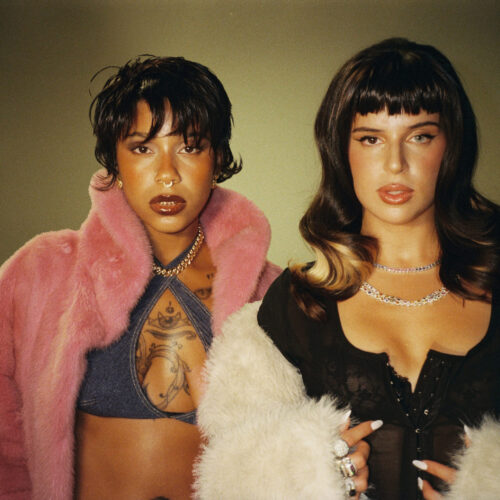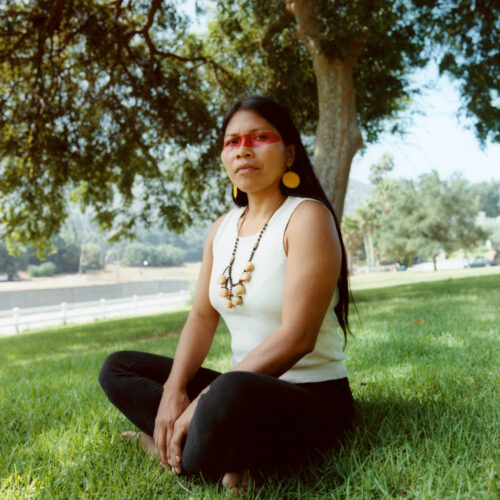Textile artist Uzumaki Cepeda sat down with Alissa Lopez Serfozo to talk candidly about domestic spaces, dressing in all white, living with multiple generations, being called “crazy,” and the comfort of faux fur. Here are 4 takeaways from the conversation that took place inside Uzumaki’s gallery in Chinatown, LA.
Uno. Some artists use their given name professionally, while others take on a different name. In Uzumaki’s case, she was born Juliana Cepeda and later took on a name that translates to spiral in Japanese. For Uzumaki, the spiral motif is evocative of a time when she took on an interest in spirituality and energy work, while also paying homage to the places she comes from and where she has been in her youth. As much pain as she has gone through, she understands that these experiences have reinforced her beliefs in herself and her strength.
Dos. Uzumaki creates sublime faux fur installations that often evoke domestic spaces from her past. While sitting down in her newest installation, “Memories Hurt,” Uzumaki explains that the artwork is a replica of her first Los Angeles apartment. Inside this space, Uzumaki shares that her favorite and worst memories occurred inside bedrooms. In turn, she highlights the idiosyncrasies of living in communities like a multigenerational home or an illegal artist loft collective.
Tres. Cross generational connections are formative aspects of Latinx identity. These connections can bring about cultural belonging and sharing of traditional knowledge, or alternatively can lead to confrontations of large differences. A self described “internet kid,” Uzumaki describes her experiences growing up with her “old-school” Dominican mom. Despite moments of misunderstanding, Uzumaki also recognizes the joy of showing her mother things she has never experienced before, and vice-versa.
Cuatro. Speaking of her Dominican-American identity, Uzumaki shares memories of traveling to the Dominican Republican to visit her father’s home throughout her youth. Reminiscing about that home, she shares that “memory is everything to me.” By contrasting moments of seeing her father’s home as a dream like beacon with moments when she’s only seen it as ugly, Uzumaki reveals that the past is often on her mind for inspiration and reflection. Her past is a reminder of what she has worked to overcome and the undulations of her unique worldview.









